Category Archive 'Quora'
09 Apr 2023

 My residential college (Berkeley) at Yale. My residential college (Berkeley) at Yale.
The images of Yale and Princeton seem to be at least slightly different today from what they were a century ago. Harvard’s, on the other hand, seems not to have changed really all that much.
Back in 1920, F. Scott Fitzgerald, Princeton ’17, in This Side of Paradise described “The Yale Thing” this way:
“I want to go to Princeton,” said Amory. “I don’t know why, but I think of all Harvard men as sissies, like I used to be, and all Yale men as wearing big blue sweaters and smoking pipes.”
Monsignor chuckled.
“I’m one, you know.”
“Oh, you’re different. I think of Princeton as being lazy and good-looking and aristocratic, you know, like a spring day. Harvard seems sort of indoors,”
“And Yale is November, crisp and energetic,” finished Monsignor.
“That’s it.”
They slipped briskly into an intimacy from which they never recovered.
—————————
Quora is loaded to the gills with questions about elite colleges (mostly from ambitious Third World residents).
Some common themes are prestige and college character comparisons. These inquiries are commonly jejune and amount to nothing more than presumptuous expressions of adolescent fantasy on the part of people with no chance of being admitted to these kinds of schools, and they generally are simply ignored.
But every now and then the question provokes an interesting response. Somebody asked:
What type of students does each Ivy League look for?
Harry Lee responded:
Just because a school has more choices in picking students does not guarantee the wisdom of its pick. Steve Jobs would have been rejected by all Ivies today. But since the same AO has been picking students over many many years, we do see some pattern that reflects the AO’s taste in part.
I will answer this based solely on my prejudice, for what its worth. Take it at your own peril. (Don’t give me which school is not Ivy stuff – I know.)
Harvard: Model human beings with presentable stats and characters (yes, they are genuinely nice), with no evidence of glaring mental disease (see Yale and Princeton for comparison). Most balanced Ivy. The only Ivy with human mascot; all others are beasts. Earth’s answer to alien invasions. Must be, and look, strong across the board, but more importantly, must have no weakness, nothing controversial, especially on paper. Certainly a fox type, not a hedghog type. (“A fox knows many things, but a hedgehog one important thing.”) Righteous and virtuous. Downside: Naive, bookish, unresourceful, unresilient, weak mental, carrying self-congratulatory smile. Often fall preys to determined and/or scheming underdogs. Diploma likely to end up being life’s greatest achievement. Real life is very different from school. Too risk-averse to try something that may be “unworthy” of alma mater; looking respectible becomes a burden after a while. Unable to reject expectation of others. Haunted by the self-question: “What is ‘me minus Harvard’ worth?” Bullied abruptly by bosses: “Let’s test how smart a Harvard guy is.” Bullied abruptly by spouses: “[You don’t even know how to turn off the dang faucet] – tell me, did you really go to Harvard?”
Yale: Creative, Passionate Artists with ADHD. Most artistic Ivy. Possess one big thing, lack others and proud of it. Ivy with greatest number of mathematically challenged – you can still succeed in life without understanding calculus. Certainly the hedgehog type (“All I need is making one big hole”) – an outlier with a nuclear punch. Flexible, witty, resourceful, irreverant, pungent, unique. Capable of counter-intuitive, original thinking. Social and gregarious like wolves (in contrast to the tigers that come below) and carry “secret club” antic to life after college. Think they can beat nerdy Harvard any time. Think they cannot beat Princeton, but rarely think of Princeton anyway. Downside: George Bush, George (another) Bush. Can be too creative for own good. Superficial and/or scheming (Many early CIA members were Yalies). Lazy underachievers – and proud of it.
Princeton: Rigorously Trained Tripartite Aristocrats (Gentleman+Scholar+Athlete) – with OCD. Most analytic Ivy. No weakness in reality (ie, not just on paper). Most hard working among HYP. Superachievers and fierce competitors. Mathematically comfortable. Motto: Only paranoids survive. Regularly beat both Harvard and Yale in almost everything. Prefer working alone, like tigers (why collaborate when perfection is attainable as solo?). Downside: Robot. Can be too perfect for own good. Serious, ambitious, studious, logical, wicked smart. Brutally efficient like Amazon dot com, lacking idealistic, romantic, human touch. …
Way too complimentary to Princeton, of course. (You can tell that Harry Lee went there.) Yale beats Princeton all the time.
12 Sep 2018

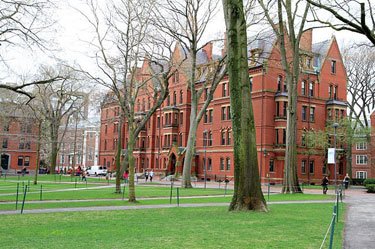
Harvard.
I once answered a question on Quora about Yale, so pretty much every day I receive a email asking to answer the question “How do I get into Yale?” from some exotic resident of the remote Third World.
Clearly, the mysteries of elite Ivy League admissions are an intriguing topic these days all over the world.
I ran into a Quora posting this morning from a U. Chicago guy named Hasnat, quoting an anonymous Harvard 2006 graduate who had worked in the Harvard Admissions Office.
I thought it pretty accurately captured a home truth applicable to Yale as well, that, beyond grades and test scores (which had better be high), they are looking for a certain kind of exceptionality and competitiveness. They want people out of the ordinary.
I think you need to join Quora and all that to open a link, so I cut-and-pasted the whole bloody thing to make life easier for NYM readers.
[A] little bit of advice.
“First of all, there are a number of small factors that can move the admissions needle in small amounts: location, economic background, race. You can just accept that these exist and don’t really count for much—a slight counterbalance to the general advantages that wealthier folks tend to enjoy as a rule. Or you can spend millions of dollars on lawyers and consultants, and hundreds of hours fighting in court in order to claw back this tiny little potential advantage from those in the lower half of the socioeconomic spectrum.
“Either way, these are things beyond your control, and I’d recommend not worrying about them. Frankly, it’s the cheaper and quicker option.
“Otherwise, the official party line, as taken verbatim from Harvard’s longtime Dean of Admissions, William Fitzsimmons (class of 1963, dean since 1986) is that Harvard selects for “academic excellence, extracurricular distinction, and personal qualities.” And that sounds good—who doesn’t love excellence?—until you think about it.
“What Dean Fitzsimmons really means is that he isn’t going to tell you anything substantial (that’s why he’s lasted for so long in his job). So I will tell you that in this context, measuring “academic excellence” really boils down to two things: Will this applicant graduate on time and happy?
“Pure intelligence is one part, hence the focus on scores and GPAs. Harvard is difficult, and someone who has never seen a differential equation will probably struggle in the basic required math courses; isomeone who has never read a Steinbeck novel or a Shakespeare play will probably feel excluded from general English Lit.
“But so is extracurricular activity. You might be smart, but do you have the discipline to keep going for four years? How do you respond to setbacks, challenges, opposition? Do you show signs of life in the wider world? In short: are you of sound mind?
“The 4.0 student who just works the ball-washing station at the country club does not necessarily demonstrate great time-management skills. On the other hand, we’ll take the person who has an A-minus GPA but spends most of her free time in a research lab breeding generations of flies for genetic tests, thank you very much. This is why admissions officers will say “well-rounded” until they’re blue in the face. There’s nothing wrong with plain old eggheads—but let’s try and get out there once in a while, too.
“And when the committee selects for the mysterious and ephemeral “personal qualities,” well, we want to know how much of a jerk the candidate is, and how well they’ll respond to a campus full of jerks.
“Let’s be honest: Harvard and its affiliates will inflict some kind of damage (academic, emotional, occasionally physical) on everyone who lingers there. It is a place where everyone is out to get everyone else. In a place where no one can be the best at everything, everyone takes any chance they can get to measure up to their peers. It is a mob of ruthless young overachievers with a taste for blood.
“Ayn Rand, eat your heart out. Your Objectivist paradise is alive and well, and its name is Harvard. Here, people believe that each of them is a “heroic being,” that their individual happiness is a moral absolute, that their own reason is ironclad and incorruptible. Just look at what four years of that does to a person. Never mind the outliers like Mark Zuckerberg and Ted Kaczynski. You just need to look at the offices of Wall Street investment banks (where half of the graduating class of Harvard ends up every year). Or the op-ed pages of New York newspapers. Or the halls of Congress (one shudders at the thought).
Read the rest of this entry »
15 Apr 2017


Michael Burden had the answer on Quora.
The elderly Prussian army captain marched smartly up to a platoon of soldiers on a Berlin street and began to bark orders imperiously. He stopped a bus bound for the outlying Kopenick district and hustled the men abroad. There, as shown in the picture below, he marched them briskly to the office of Kopenick’s mayor and snapped: “You are under arrest !†Intimidated by the authoritative overbearing manner of the army officer, the mayor managed to ask timidly “Where is your warrant ?†“My warrant†roared the captain “is the men I command.†The mayor, himself a reserve officer, was curious about the captain’s appearance at the time, but he kept his curiosity to himself. The captain then ordered the borough treasurer to hand over all of the cash in the treasury, just over 4,000 marks, and issued an “official†receipt. The mayor, his wife, the treasurer and the deputy mayor were then marched outside the town hall and held under guard. The captain ordered his men to stay at their posts for half an hour and marched away with the 4,000 marks.
The captain was in fact Wilhelm Voigt, a cobbler and ex-convict who had exploited the Prussian awe of uniformed authority to rob Kopenick of its petty cash in October 1906. Ten days later, when the police arrived at Voigt’s attic home, they found the uniform wrapped in a bundle. He did not resist arrest but asked only to be allowed to finish his breakfast. Voigt, who explained that he had learnt to mimic the speech and mannerisms of Prussian officers while mending their boots as an apprentice, was jailed for four years.
His exploits had attracted great public sympathy and affection, however, and he was pardoned by the Kaiser after serving half his sentence. Voigt retired in comfort to Luxembourg on a life pension, given to him by a rich Berlin dowager who had been impressed by his sheer audacity.

29 Nov 2016

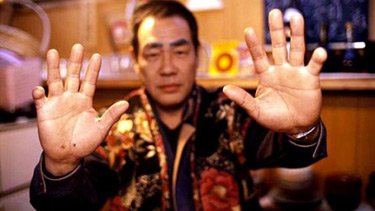
The Yakuza life, according to Kaz Matsune on Quora:
Here is a story I heard from my father-in-law.
My-father-in law runs a small restaurant in a rural area of Japan for the past 30 years. It’s located in the even remote part of the town.
Because of the restaurant’s location, many customers come to avoid the crowd in the city for a nice quiet sit down meal.(food is very good by the way)
Naturally and eventually, some Yakuza members discovered this quiet establishment, for they too need a place to eat lunch and dinner to avoid crowds. So, they started to come to the restaurant frequently.
Now, my father-in-law is quite a big man for his generation: at the age of 80, he is 183cm (6’1″) tall and weighs 100kg (220lbs). Thanks to his physical feature, he is not easily intimidated, even by the Yakuza.
When one of the Yakuza members noticed his missing pinky finger, their mode suddenly changed. Missing pinky is a sign of Yakuza – whenever they commit a serious mistake (among their organization), it’s their custom to cut their finger off.
“Hey grandpa, what did you do?” one of the Yakuzas asked.
“What do you mean?”
“Your pinky finger.”
“Oh this? My finger got caught in the electric winch on my boat.”
“Your boat?”
“Yes, I am a fisherman also. I go and catch fish and sell, when the restaurant is not so busy.”
“You are not Ex-Yakuza?”
“No. Are you?”
“Yes, we are. We thought you were because your pinky is missing. We thought you slept with your boss’s wife or girlfriend. That’s when we must cut our pinky. We thought you were reckless and courageous, worth admiring.”
“Really? Why courageous?”
“Because you are reckless, we thought.”
“Why is it good to be reckless?”
“Because we cannot be. Police know what we are doing and where we are. They always have their eyes on us.
Read the whole thing.
16 Aug 2016

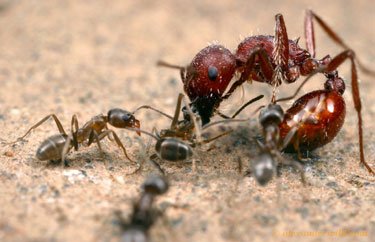
An Argentine ant (Linepithema humile) attacks a much larger fire ant (Solenopsis invicta).
Every now and then there is a good question and answer on Quora. Someone asked: “Do animals fight wars and if so what was the largest war?”
Zoologist Suzanne Sadedin replied:
The largest war in animal history — in fact, by numbers the largest war in history — is going on right now.
Once upon a time there was a tiny brown ant who lived by a swamp at the end of the Paraná River in Argentina. Her name, Linepithema humile, literally means “humble†or “weakâ€. Some time during the late 1800s, an adventurous L. humile crept away from the swamp where giant river otter played and capybaras cavorted.
She stowed away on a boat that sailed to New Orleans. And she went to war.
At home in the Paraná delta, L. humile nests would ferociously defend themselves from other nests, both of their own species and other kinds of ant. It was a life of never-ending territorial skirmishes, where nobody could really get ahead. When two L. humile met, they would flick their antennae over each others’ bodies, tasting the combination of hydrocarbons on their skin. This flavor would tell them whether the stranger belonged to the same nest. If she tasted familiar, she would be recognized as a sister. She would be gently stroked, offered food and welcomed into the nest. But if the flavor were not recognized, the ants would try to kill each other.
In New Orleans, something changed. L. humile, invading the United States, spread like wildfire. Instead of forming discrete, competing colonies, they behaved as a united army. They would brutally attack ants of other species, but welcome every L. humile as a long-lost sister in arms. Like L. humile in Argentina, other species of ants in the US must defend their territories against their own species. This gives the cooperative L. humile a huge strategic advantage; they waste neither lives nor energy on fighting with their own kind, but focus ruthlessly upon species-level conquest. Though individually tiny, they can swarm over native ants many times their size.
The supercolony grew to cover most of the United States. Then it spread to England, Europe, Japan, Australia and New Zealand. L. humile is now abundant on every continent except Antarctica, and wherever she goes, she slaughters native ant species.
How did she do this? Did inbreeding reduce the diversity of hydrocarbons on the ants’ skin, such that they no longer saw one another as enemies, but as sisters? Did natural selection tone down L. humile’s territorial instincts to suit their environment, so they would react aggressively only to the strong stimulus of another species? It seems likely both mechanisms were involved.
Things have not been perfect. Near San Diego, a schism formed, and a separate supercolony was created. The battlefront extends for miles; some 30 million ants die there every year. Another super-colony has formed in Catalonia. Perhaps as L. humile eliminates her competitors, her alliance will fracture entirely into squabbling tribes. But for now, from Europe to the United States, all the way to New Zealand, a global megacolony still persists, consisting of around 1 trillion individuals: a humble brown ant united in war against every other ant alive.
People always talk about the meek inheriting the earth. In L. humile’s case, it’s clearly working.
————————————-

L. humile distribution by US county
25 May 2016

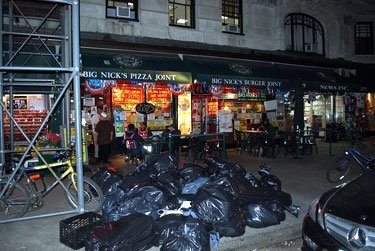
On Quora, a German answered the question: What was your biggest culture shock visiting New York City?
My shocks were mostly negative.
I am German, male and 25. I had travelled to the US quite often and had been to a lot of different places there. I love the US, especially the National Parks. I also love US cities regardless wether they are cheap or expensive.
When a few years ago I came to NYC for the first time I had the expectation that NYC wouldn’t differ more than other cities from how they are shown in movies and tv shows. I was wrong.
I expected NYC to be at least somewhat of a modern and shiny skyscraper city. The secret capital of the US – and – maybe the world. I expected something at least iconic.
Now when I landed at JFK moldy carpets and a worn down airport greeted me. I took the train to Manhattan that overpasses ghettos.
I could not believe how loud and shaky the subway was. The awful state of maintenance. How extremely dirty it is. How bad signs are placed. How counterintuitive everything is made.
Everything must have been great some decades ago but was never kept well. There was no good way to get from one part of the city to another. Taxis are stuck and the subway is disgusting. Busses are worse.
The smell. When I think of NYC I no longer think of lawyers in suits on a rooftop terrace. I think of the strong smell of death – of rotten rat meat.
The garbage. Everywhere. On the streets. I mean black sacks full of garbage to be picked up in few hours stinking and leaking.
How unimpressive 5th Av is. Or Times Square.
The skyline is really not so impressive or iconic if you have been to Hongkong or other places.
I was amazed by the the awful German translations on the large signs of the 9/11 sight. I always thought that this was a place of big importance and that NYC would not use Google translator to greet the world when they are visiting to show respect.
You might think that I am exaggerating and describing things that one could look over. Maybe. But I am just trying to justify my disappointment.
The poor quality of life and the huge costs. You can park your car in NYC for a few hours for a couple of hundred dollars. But why would anyone consider it worth it? You can live in a shoebox and do your laundry in a nearby laundromat? What good reason is there to do that? The prices felt very artificial. Now if there was a demand justifying these prices I would shut up. But for good reason there actually isn’t.
NYC was a big disappointment for me. It is just another US city. I did not feel safe. I was simply asking myself why anyone would want to spend so much money for such a bad quality of life.
Read the whole thing.
This German chap is perfectly right. New York City has been declining in governance, liveability, and affordability since WWII. He doesn’t realize, though, that the city is actually cleaner, less smelly, and less crime-ridden since the time of Giuliani.
12 May 2015

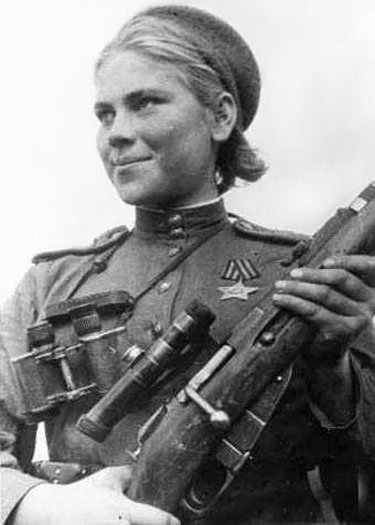
This poor girl had no choice of rifle and had to make do.
I get emails from Quora, inviting responses to questions I previously answered or responded to. One common topic they pertain to is guns.
I don’t normally think of Quora questions and answers as blog fodder, but there was this answer today which was so out there that I feel obliged to quote it and comment on it.
Some unidentified fellow asked:
What would be a good, fairly accurate and easy-to-maintain rifle I could buy without breaking the bank?
I’ve been interested in shooting for a while, and shot .22s, .223s and 7.62 at summer camps and a neighbor of my grandfathers, but never owned my own gun. I would like to get better at shooting and buy my own rifle, but none of my relatives know anything about guns, and a lot of advice I have gotten thus far was for either very expensive or very basic guns. I’m not a bad shot, and don’t need an absolute beginner rifle, but something fairly cheap that still has the recoil, heft and feel of a like a Remington 700 or equivalent gun.
I live in NH, if that helps.
and Bradley Peterson replied:
I just wrote out a thorough answer about the Remington 700, Winchester Model 70, Ruger American, etc. and then I said to myself “screw that”.
Buy a Mosin.
Pay around $200 for a run-of-the-mill 91-30, and you buy a ticket into an all inclusive club of Soviet conscripts, Tsarist soldiers, Finnish and Russian super snipers, Chinese phesants, Vietcong Guerrilas, Olympians, Ukranian Rebels, Bubba, and now, you.
I’d say the rifle is “good”. It has a proven track record – is first version was made in 1891, making the M91, and its 7.62x54r cartridge the longest serving cartridge in existance, and the longest serving rifle design on the battlefield. The cartridge itself is powerful enough to take down any North American game animal. The Mosin is probably the most deadly firearm ever invented – I seriously doubt another has killed more people. Its a sobering thought, but its a piece of history, and you have to accept it for what it is – a tool for breaking and killing things that was used A LOT.
Fairly accurate? It depends on which rifle you get. They are basically all used – coming in crates after years of storage covered in a preservative called cosmoline, and accuracy is a crap shoot. My 91/30 infantry rifle has a bright brand new looking bore, and is pretty darn accurate for having fairly poor iron sights. A realistically sized target is easy to hit out to 200 yards, at least. My PU sniper rifle, like the one held by Roza Shanina in the above photo, will shoot ~1-1/4 MOA. I’ve seen some shoot sub MOA – not bad for a 70 year old WWII rifle.
Ammunition is easy to come by. It was made by the Soviet Union and other Eastern Bloc countries during the Cold War by the crap ton, and its cheap, at around $.20 a round, or $100 for a 440 round can.
Did I mention it comes with a bayonet?
You can skewer a pig, drive a screw, or roast marshmellows with this thing (I’ve done the latter). Yeah, you can roast hot dogs with your rifle. Try that with a Remington. You can break bricks with the steel buttplate. The rifle has less than 40 parts. In a pinch, you can shoot a 30-30 round out of it, and the action is ridiculously strong. It is nearly impossible, save a bore obstruction, to blow this rifle up.
The drawbacks? The basic rifle weights around 8.5 lbs. With bayonet, sling, and ammunition, count on 10. Even with that weight, it kicks like a mule. When shooting my sniper rifle with high power commercial loads throwing heavy bullets, it hurts. The rifle is also sighted in with the bayonet attached – meaning to be accurate, you need to add an additional pound, and 1 foot to the end of your rifle, which is already hardly manuverable. You can move around the front sight base and re-zero, but its a pain.
In addition, people will look at your rifle, then at you, and think “poor guy, doesn’t have money for a real rifle”. The course of action to take from here is pretty simple. Put the stripper clip of ammunition into the rifle, and pump that target full of steel. They might try going *pew pew* with their glorified .22s while you produce smoke, fireballs, and a TON of noise, but you go home satisfied, knowing you have an awesome rifle.
I have posted previously on the current craze for purchasing and collecting (cheap, cheap, cheap) Mosin Nagants being imported by the container-load from Russia and other former Soviet Empire countries. The obvious foundation cause of Mosin collecting is the fact that Mosins are cheap right now and are bound to go up in price, the same way SKS-es did, once they run out of them, and the fact that the ammo is incredibly cheap as well.
The only real argument for owning a Mosin (they are really too expensive to use as boat anchors or tomato stakes) is they are very cheap to buy and very cheap to shoot.
They are a historic arm, of course, if you want to get in closer touch with the history of red-beet-munching peasants being conscripted and used as cannon-fodder; of purges, mass executions, and innocent people being marched off to Siberia; of totalitarian dictatorship, human life valued as next to nothing, the clash of two barbarous dictatorships and subsequent Third World wars of Revolution. Why! the proud owner of one of these can hold it in his hands, and imagine all the joys of being driven in mass formations into the fire of German machine-guns by commissars with machine-pistols ready to execute on the spot anyone who falters.
Factually speaking, Mosins are a crude, primitive military long-arm, featuring a design dating back to 1891, older than the Krag and not as good. They are ugly, non-ergonomic, ugly, heavy, ugly, and inferior in every way (other than price) to nearly all the best-known bolt-action rifles of WWI and WWII.
Mosins are at the bottom of heap, battling it out for last place and the title of most inferior and repulsive rifle with the Japanese Arisaka and the Italian Mannlicher Carcano.
What I would say to the unidentified author of the question is: Go to a gun show, or look on Gun Broker, for a nice, good quality sporterized 1903 Springfield or 1917 Enfield or 1898 Mauser or 1909 Mauser. I would suggest looking for one chambered in .30-06 Springfield or .270 Winchester. You will have to pay about double what a Mosin would cost you, but you will have a lot more attractive, lighter, more accurate, more ergometric and –in the long run– more valuable rifle.

Feeds
|
 My residential college (Berkeley) at Yale.
My residential college (Berkeley) at Yale.










